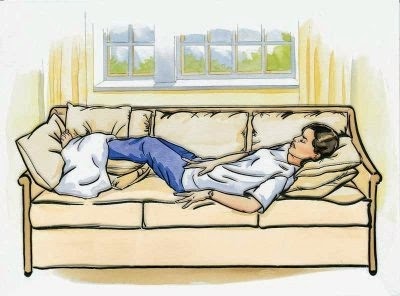Regardless of the season or how safe and careful we are while doing our activities, accidents happen. For this reason, it’s always a good idea to be up to date on basic First Aid and how to take basic care of an injury. It’s also the best way to help that injury heal faster and help us get back to the activities we love.
What happens to our body when we have an injury?
The first thing our body tries to do when we get injured is to protect itself from further injury. Our nervous system, our circulatory system, and even our muscles and skin work together to isolate the sight of the injury by causing our blood vessels to expand and dilate. This causes the heat, inflammation, and pain that we normally see in an injury. Inflammation is a safety response to help stop the area from moving and possibly getting injured further. Inflammation also allows healing cells and nutrients into the area to start the healing process. In this immediate stage of healing, it is very important to perform R.I.C.E.R. – a basic form of medical treatment to help with the symptoms created by the injury.
What is R.I.C.E.R.?
R.I.C.E.R. is an acronym that is used to help us remember how to take care of an injury:
Rest – The best thing to do when we have an injury is to try to keep the limb and our bodies as comfortable as possible. This way, our body can focus on the task at hand: healing the injury. Even after the main injury has been tended to, getting as much rest as possible will speed up healing overall.
Ice – Ice will help with the pain from the injury as well as the inflammation that follows.
Ice should be used on the area of the injury. A soft gel ice pack or bag of peas can be placed in a towel and onto the affected area for 15-20 minutes at a time. This can be repeated every hour. People often think of ice for a new injury but not an old one. Ice is also often associated with the area’s inflammation and swelling. Old injuries can also benefit from the use of ice, and it can help heal soft tissue. Ice can also be used to help tightness and discomfort, decrease symptoms, and help the healing process.
A word of caution: Never apply heat to a new injury or any area that is painful or swollen. The heat will cause too much blood flow to the area, which may contribute to more inflammation. When in doubt, use ice.

Icing can help reduce inflammation and swelling to help you heal faster!
Compression – Compression will help stabilize the area to prevent further injury. Our body again will already start compression even before we apply a hold or a bandage on top of the affected site. What’s important is helping that process so that the body can relax and heal. This will also help prevent muscle spasms that can follow an injury.
Elevation – If possible, elevate the limb or affected area. This helps the inflammation to cleanse itself, filtering out any cells that may have been damaged from the injury. Consider elevation with only certain types of injury: if it’s too painful to move the area, it’s always best to keep it in a comfortable position that provides the least amount of pain and effort.
Referral or Rehabilitation – It’s important to never underestimate an accident or injury. If you’re unsure about its extent, always seek medical attention. Our bodies run on adrenaline, part of our fight-or-flight response, to give us the boost we need to get through an injury. Except, once the adrenaline goes down, we can feel more pain or more injuries than we felt before. It’s better safe than sorry to seek medical care.
The next step after any injury is the rehabilitation process. Having your chiropractor, massage therapist or physiotherapist evaluate the injury with you is important to help you get back on your feet.
Healing an injury is a multi-stage process. But being aware of what to do in the first stages will help you heal, not only in the moment but also at later stages.
No matter what fun activity you will be doing this season, being prepared should always be a lifelong goal. Looking after your health and the health of your loved ones no matter where life takes you. Happy adventuring!



